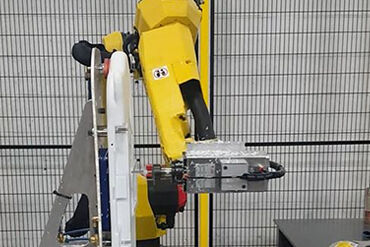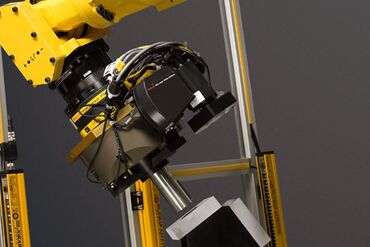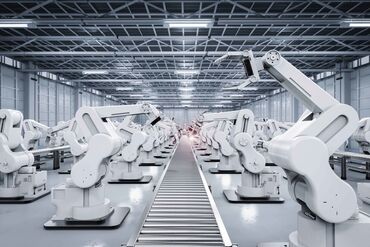Industrial Robots Can Prevent Exposure to Chemicals and Health Problems of Workers
工业机器人焊接不仅provide increased precision and productivity on the work floor, but also increased levels of safety. Robotic welders are able to tackle the dirty work and remove workers from harmful exposure to chemicals. This further improves the morale and overall safety of the welding production line.

Manufacturers need to consider not only how workers can be safe around the robots, but also how the robot can increase safety for workers. Amongst the most important justifications to use industrial robots may be to put them in the fields where they are shielding people from working in dangerous environments that require the handling of hazardous materials such as explosives, to carcinogens, to radioactive substances. Robots are also completing heavy duty tasks that are repetitive and straining, helping with ergonomics.
Industries realize how important industrial robots are to conduct these unsafe work duties that would expose workers to dangerous conditions or injuries. Robots are now so important for the use of processes that expose workers to toxic fumes such as painting, coating, fiberglass cutting, deburring and grinding. When workers are too close to theseapplications, they can inhale harmful fumes or particles that can affect the brain, lungs, eyes and skin.
This ensures the safety and health of workers and consequently reduces expenditures on medical coverage.
Real Life Problem #1: Manual Welding
Manual weldingexposes the workers to damaging noises, toxic gases, hazardous fumes, dangerous metals, extreme heat, ionizing radiation, and ultraviolet and infrared radiation.
All of the above can cause severe health problems such as pulmonary edema, bronchitis, asthma, pneumonia, emphysema, heart disease, hearing loss, reproductive risks, and stomach ulcers.
Even when every precaution is taken, manual welding presents many health risks. It can cause short and long term damage to the respiratory and central nervous systems, blood cells, and kidneys. For example, welding rod fumes contain the neurotoxin manganese which is linked to Parkinson’s disease, a neurodegenerative disease with no current cure.
Solution:Robotic welders offer the perfect solution not only for their amazingly consistent precision, but more importantly maintaining the health of the workers. Many industries are switching torobotic weldersto protect the health of their workers by doing the dirty job around ventilation systems and shields to block out any radiation.
Welding robots provide a safe and effective alternative to manual welding as they protect lives, avoid accidents, prevent disease, and save money.
Real Life Problem #2: Robots Offer Solutions to Haz Mat Operations
Explosive-proof robots are specially designed to work in areas where vapors and fumes could ignite easily if met with a spark. For instance, one manufacturer uses industrial robots for material handling of car steering wheel components where there are flammable vapors.
Robots can also be used for munitions disassembly in places where there is leftover World WarIInerve gas ordinance. The decomposing chemicals and materials would not be good for humans to pick up so robots are the perfect choice.
核材料机器人可以执行,汉族dle nuclear materials where everything is radioactive. They can even collect samples for analysis of soils where radioactive contamination is suspected or handle biological hazards like viruses or other pathogens.
It is easy to see why the automating will not only increase the value of your production line, but also the health of your workers.Robots.com is a certified integratorof many leading robot brands and offers both new and reconditioned robots, along with work cell options, at affordable prices.
Contact Robots.com experts onlineor at877−762−6881to further discuss your specific automation needs.
Related Articles
You might be also interested in:

- Featured
Latest Advancements in Material Cutting Robotics
Read about the latest technological advancements in robotic material cutting.

- Featured
Emerging 3D Vision Technologies for Industrial Robots
Learn about the emerging 3D vision technology that businesses are using for industrial robot applications.

- Featured
Most Popular Industrial Robotic Applications for 2021 and Projections
Explore the most popular application trends of 2021 and what to expect in the future.
